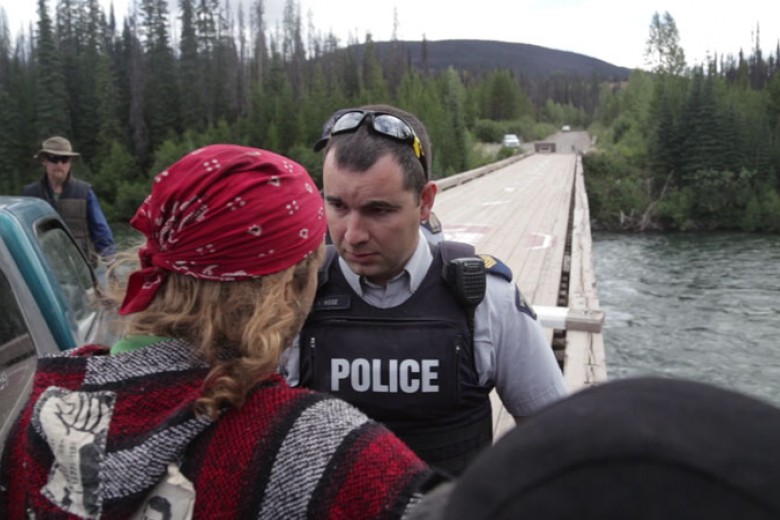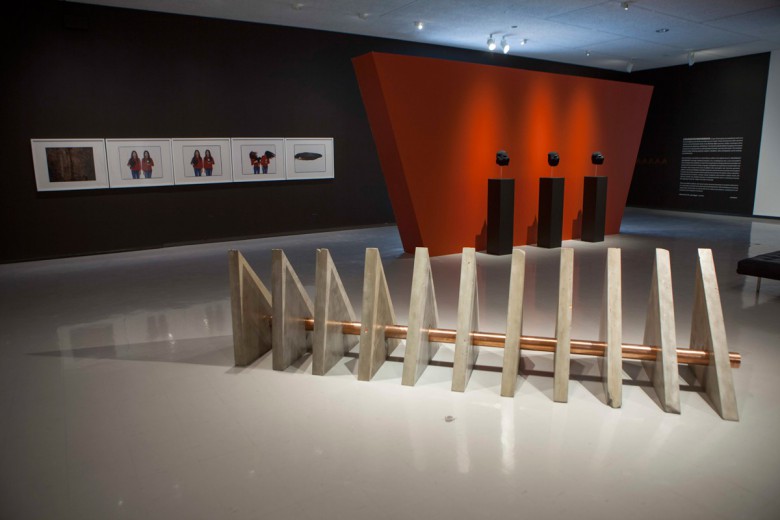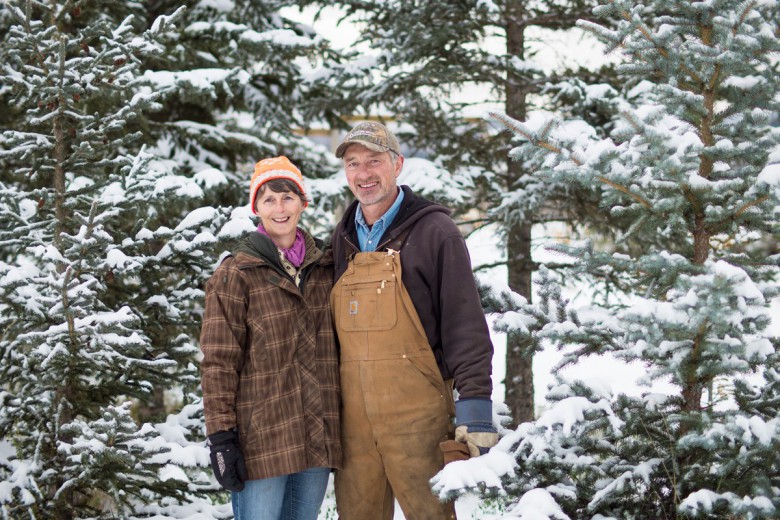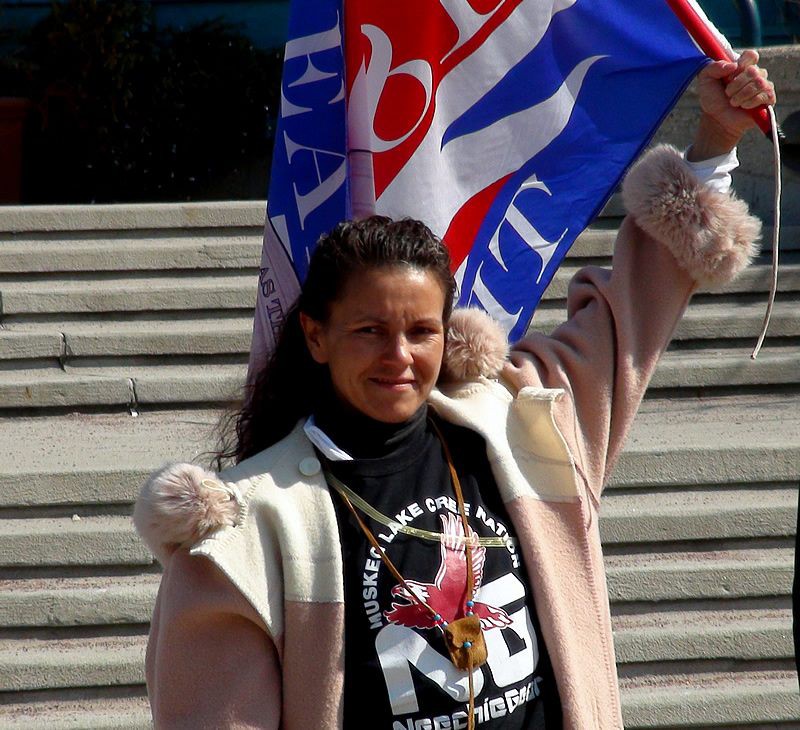
“I’ve heard people say, you know, if First Nations want less pollution they should stop driving their cars. Well, I’m all for that. I’ve got two feet and a heartbeat, and I’ve got horses.”
Nancy Greyeyes left her horses behind, but she is using those “two feet and a heartbeat” along with walkers from the northern community of Stanley Mission, Saskatchewan to walk all the way to the Canadian Parliament in Ottawa.
The walk, aptly named “A Sacred Journey for Future Generations,” began on March 16, in minus-37-degree temperatures, and will cover 3,450 kilometres with a plan to reach Ottawa on June 21. “Every step they take takes us forward and reminds us there is no going back,” says the group’s website.
The original team from Stanley Mission consisted of Kara B. Charles (age 14), Bruce McKenzie (age 48), Marge McKenzie (age 40), and Joyce McKenzie (age 49). These four were joined by three others—Jamie Martell (age 32), Charissa Tootoosis (age 16) and Brad McKenzie (age 36)—in Prince Albert. Nancy Greyeyes (age 40), having stayed in Stanley Mission a couple of weeks longer to meet her newest grandchild, started walking with them in Saskatoon. Bryan Waciston (age 32)—from Onion Lake First Nation—began the walk from Leslie, Saskatchewan. Reuben Roy of Beauval (age 17) and Geron Paul of English River (age 22) met up with the group in Winnipeg. Most recently, Sharron Belay (age 50) from the Nipissing First Nation started walking with them in Thunder Bay. In addition, these core walkers have been joined by many supporters for portions of the journey.
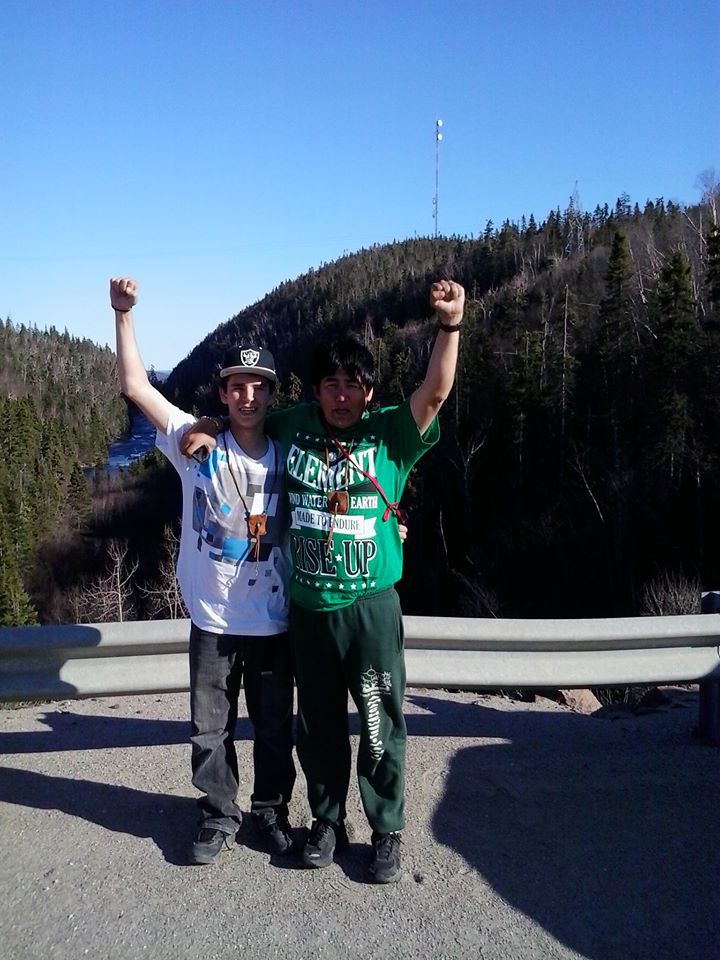
Their march from northern Saskatchewan, across Manitoba, and down to Ottawa, protests the environmental impact of Federal omnibus Bills C-38 and C-45, which introduce vast swaths of new legislation for everything from The Fisheries Act to The Indian Act. “The [Churchill] river system where I’m from is no longer protected,” says Bruce McKenzie, the initiator of this walk. “We want to [send] a big statement to Harper and the Conservative government that we mean business. We are serious about our water system, and we want to protect our water system—not only for us but for the whole Canadian population.”
The Conservative government is attacking Canada’s Indigenous peoples on all fronts, hungrily grasping at the 0.2 per cent of land that has been left in Indigenous care while dismantling any remunerative obligations for taking the other 99.8 per cent. Bill C-38, the 428-page Budget Implementation Bill passed in June 2012, includes within it a volley of crushing blows to the ecology of Turtle Island. Among the 150 legislative items dealing directly with environmental regulations, the Bill repeals both the Canadian Environmental Assessment Act and the National Round Table on Environment and Economy, grants the government cabinet power to override decisions of the National Energy Board, puts the protected species list through a woodchipper, and abolishes the Kyoto Protocol Implementation Act.
The Idle No More movement, while reacting to Bill C-38 and other Conservative legislation, was principally catalyzed by the proposal of Bill C-45. Bill C-45 reduces millions of protected waterways to only a couple hundred, nearly all located in cottage country and other heavily Conservative areas. Given that twenty percent of all First Nations are under a Drinking Water Advisory, with 1,800 reserve homes lacking water service and 1,777 homes lacking sewage service, the protection of waterways for First Nations communities is vital. A newer piece of legislation, S-8, on First Nations Water, sets fees for water usage, outsources regulations and gives no extra funds for administering these new regulations.
In addition, Bill C-45 unilaterally amends the threshold for surrendering reserve land, forcing communities to enter into a “majority rules” framework for giving up their rights to land while making it easier for extractive industries to access reserve land.
The Stanley Mission walkers see the pollution and contamination of these industries directly affecting their communities and lands. As Greyeyes puts it, “The treaties were signed and were agreed to share to six inches—a depth of six inches, the depth of a plow. And for a very good reason, because none of that stuff was ever supposed to come out of the earth. There’s no harm while it’s in the earth, no harm whatsoever. When it’s brought out, that’s where the harm is. [It] is in the extraction and the production and the refinement processes and the waste that they cause.”
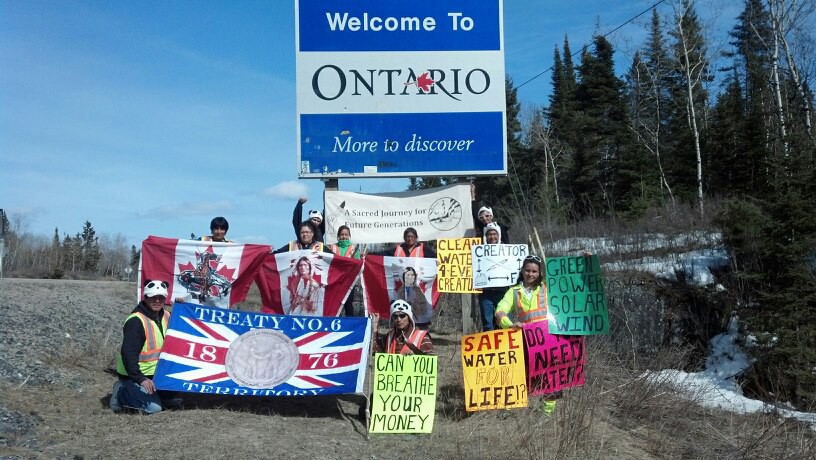
More than 2,000 kilometres into the journey, Marge McKenzie is more motivated than ever. “It’s been really inspiring…” she says, “because I was told I would never make this walk… I actually had a friend in Stanley Mission who came to me and said, ‘you know, Marge, I didn’t think you’d make it out of Stanley Mission…[but] it was set in my heart to do it, and there was nothing that was going to get in my way from continuing this walk.”
Not only do they have support from the Stanley Mission community, including Chief Tammy Cook-Searson of the Lac La Ronge Indian Band, but other communities have rallied to their support. The heroic recognition they’ve received came as a surprise. For example, at Daystar Reserve in eastern Saskatchewan, Marge relays, they “invited us off the road to go and have supper, giving us feathers and acknowledging us. That was overwhelming. It was so awesome, it made us even more grateful for this walk.”
Beyond the validation they’ve received from Indigenous peoples and Canadians, the walkers have been honoured and encouraged through the habitats they’ve been traversing. Accompanying them on their journey are hawks, eagles, deer, elk, muskrats, and horses.
One day, they saw a deer giving birth; another day, they ran into two timber wolves. “Seeing the animals,” says Marge McKenzie, “it’s a way of them acknowledging us. I really believe that.” But as they walk, they are also seeing the effects of the environmental degradation that they are protesting: logging, polluted waters and changing weather patterns.
While the primary response to the walkers has been one of support, they have encountered resistance along the road. One person approached them and said, “People around here, we support Bill C-45 because of First Nations accountability.” This is a common misunderstanding that has been further perpetuated by the Conservative government.
Along with Bill C-45, the First Nations Financial Transparency Act (Bill C-27) misleads the Canadian public into believing that bands have been mismanaged or financially irresponsible. But bands have always had to be transparent to the Canadian government to maintain funding. Bands are audited yearly and are required to submit reports every three days, while Indian Affairs dictates how the money is spent. In other words, there are no options for bands to decide what amount of money goes to housing, water, health, or education. Given that these payments don’t even equal the funding of the provinces and certainly don’t come anywhere near the worth of the land that was taken from the First Nations peoples in the first place, such extreme accountability requirements are patronizing at best.
And what about that popular idea of corrupt “millionaire chiefs” used by Indian Affairs to promote legislation like Bill C-27? According to Mi’kmaq lawyer Pamela Palmater, the average salary of chiefs and councilors is $36,000. The average Canadian salary? $46,000. Not a single millionaire chief. Ever.
The main functions of Bill C-27 are to give Indian Affairs the legal right to cut funding at will, and to provide a distraction for the Conservatives to pass other legislation enabling acquisition of Indigenous lands and resources. Meanwhile the Canadian public is appeased that First Nations are being taken to task for so-called mismanagement of funds.
“This financial accountability and all this other stuff, it’s a smokescreen,” says Greyeyes. “It’s propaganda, and people gotta see through that and realize that they’re selling off our country, our resources, and they’re not going to do it safely. They’re going to do it fast… There’s a word in our language, mâmâsîs, it means ‘half-assed,’ you know, ‘careless.’”
While the Conservative government clearly forgot to honour the United Nations Declaration on the Rights of Indigenous Peoples’ principle of “Free Prior and Informed Consent,” Indigenous peoples are now giving Harper and his Conservatives unprecedented opportunities to meet with them. From Theresa Spence’s hunger strike to the “Youth 4 Lakes” walkers from Manitoba to the Nishiyuu walkers of northern Quebec, Harper has denied these dedicated individuals a voice.
In the case of the Nishiyuu walkers, they journeyed 1,600 kilometres to Ottawa on March 25th only to be passed up by Harper in favour of meeting a panda at Pearson International Airport. He could not claim he didn’t know they were coming, as the walk began in mid-January.
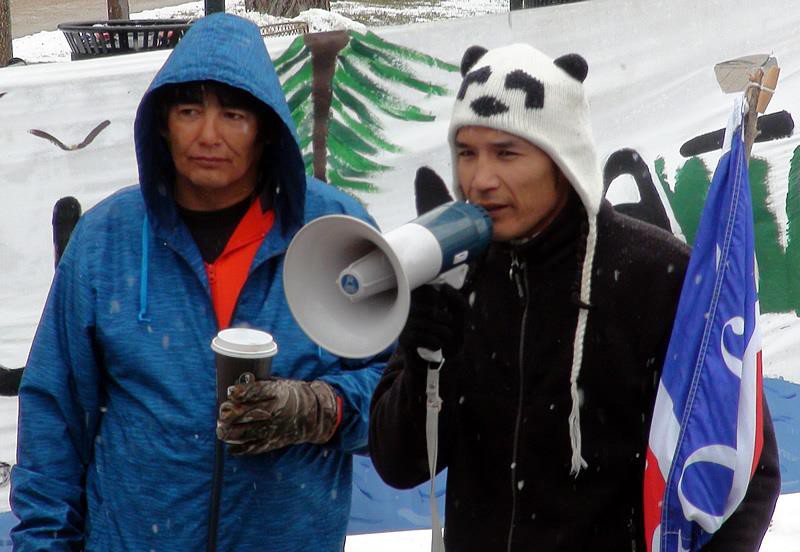
In reference to Harper’s snub, the Stanley Mission walkers have accumulated panda toques, hoping to arrive in Ottawa in visible support of the Nishiyuu and with a clear request to be seen and heard. With the outrage against the Conservative government’s illegal and misguided laws growing, Nancy Greyeyes warns Canada’s decision makers with another Cree word: mistikwân. “It means big head,” she says, “you get too big a head and, you know, it’s in history: Babylon, Sodom and Gomorrah, the Titanic, any time humans think they are smarter than god and can out-think god’s plan, they’re wrong; it’s going to come to catastrophic consequences because of it.”
Please support A Sacred Journey for Future Generations. Make donations by calling Bruce McKenzie (1-306-202-9856). Notify communities along the way to express their support by joining parts of the walk, providing food or lodging, or simply by greeting the walkers along the way. To find out where they are, check their regularly updated Facebook group or contact Nancy Greyeyes (1-306-202-9856) along the road. And finally, pay attention on National Aboriginal Day (June 21st) for the arrival of the walkers in Ottawa!
Thank you to Pamela Palmater for her informative presentation about Harper’s Legislative Agenda in Regina, Saskatchewan on April 19th, 2013 which provided context and content for this article.


